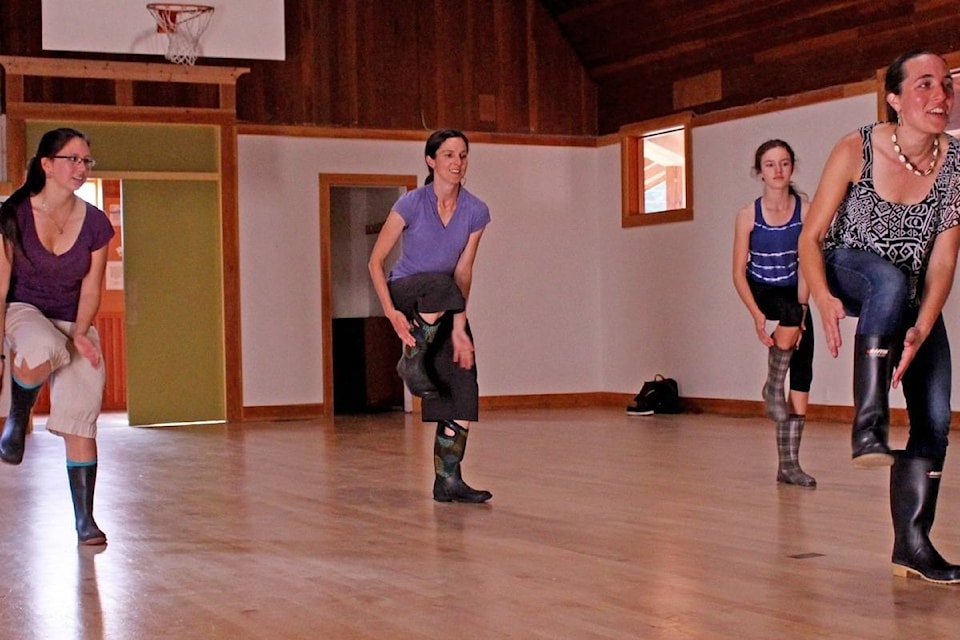What began as a form of communication between black mine workers in South Africa, is now taught and performed around the world, including here.
Gumboot dancing started in the mines in South Africa where African miners were forced to work in harsh conditions, Sarah Van Borek told a small group at a gumboot dancing workshop last Thursday.
Van Borek was teaching the Errington adult world music classes at the Errington War Memorial Hall. One of the classes was South African gumboot dancing which Van Borek studied while in South Africa.
Story continues below
Along with mining — a big part of the country’s history, Van Borek said — was apartheid, which was a system of institutionalized racial segregation.
According to the Apartheid Museum, segregationist laws kept most skilled trades for white people only, leaving lower-paying tasks to black workers. Even poor white workers doing the same job as black workers were paid more.
To add to the working conditions, Van Borek said, the mines flooded.
“Rather than resolving that flooding problem the workers were given boots because they’d be working with the water around their feet and that might cause problems.”
These boots became a part of the miners uniform.
With the harsh working conditions, Van Borek said there were strict rules as well.
“One of them being that they weren’t allowed to talk to each other,” she said.
“So if you can imagine being under the ground, working in those kinds of hot, uncomfortable (conditions), and you can’t speak with each other, maybe you still want to have a way to communicate. If you’re being treated in a way that doesn’t feel fair, you also want to be able to have a secret language and vent your frustrations.”
Van Borek said the workers developed a secret language through slapping their boots and hitting their chests.
“A lot of the mine workers came from different parts of Africa, different cultural backgrounds with vibrant traditions and music and dance, and so, that also found its way into what they were doing with the boots and the movements.”
However, Van Borek said, when the bosses found out, they initially wanted to stop the communications.
“Then they also recognized this was actually a really positive thing for the teams to be doing, but they didn’t necessarily know that some of the messages in there (the beats) were actually critiquing the working conditions.”
Since those days, Van Borek said, gumboot dancing has grown.
“It’s not just men that perform it, it’s also women, boys and girls and people of all genders and backgrounds,” she said. “I like to think of it as this dance of resilience and the idea of what’s possible when people are working together for something that’s really positive and good.”
